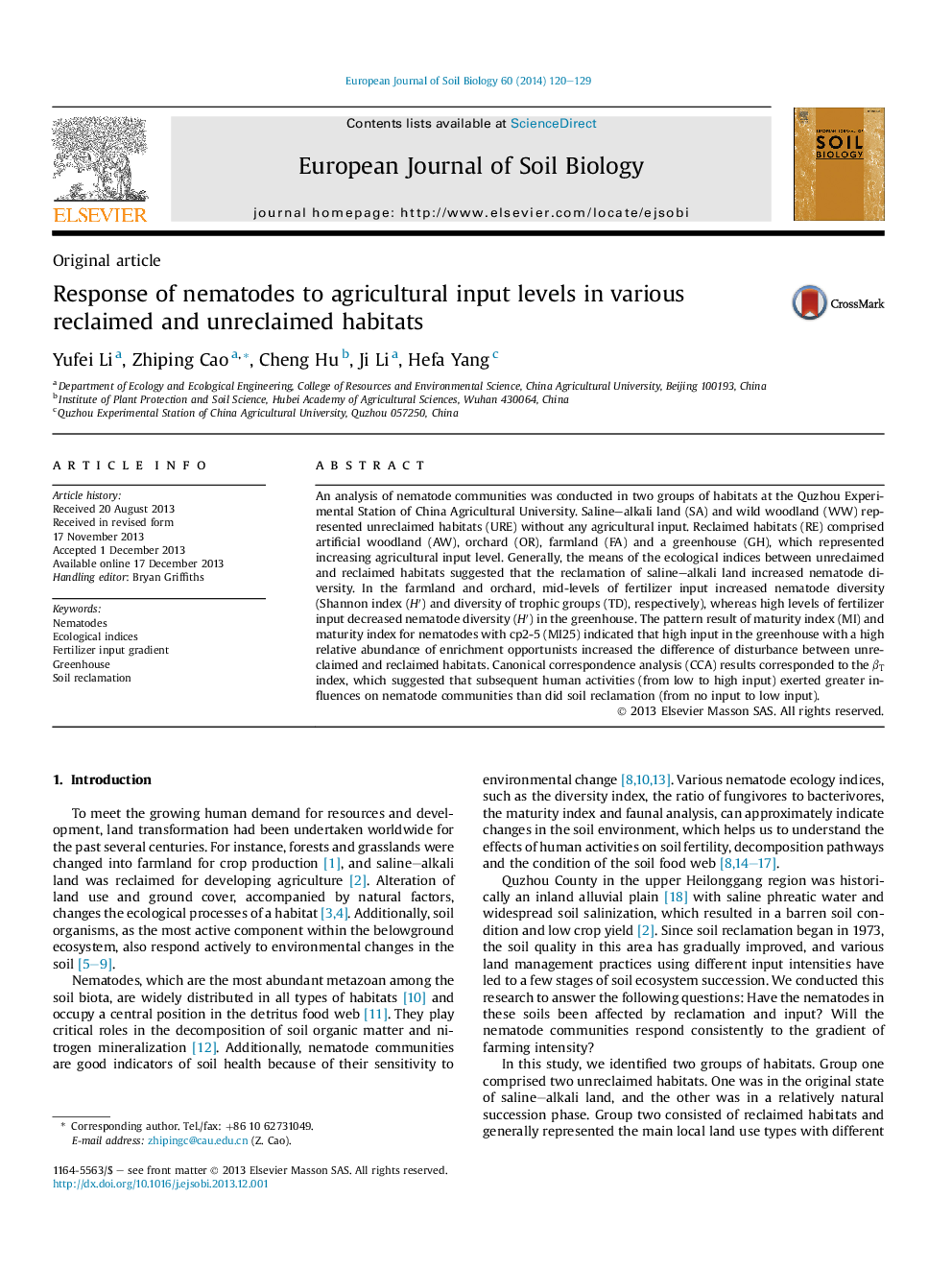| Article ID | Journal | Published Year | Pages | File Type |
|---|---|---|---|---|
| 4391910 | European Journal of Soil Biology | 2014 | 10 Pages |
•Reclamation on saline–alkali land with human input increased nematode diversity.•Habitat management with medium input levels presented high nematode diversity.•High level fertilizer input caused a decrease of nematode diversity.•Human input exerted greater influences on nematode communities than soil reclamation.
An analysis of nematode communities was conducted in two groups of habitats at the Quzhou Experimental Station of China Agricultural University. Saline–alkali land (SA) and wild woodland (WW) represented unreclaimed habitats (URE) without any agricultural input. Reclaimed habitats (RE) comprised artificial woodland (AW), orchard (OR), farmland (FA) and a greenhouse (GH), which represented increasing agricultural input level. Generally, the means of the ecological indices between unreclaimed and reclaimed habitats suggested that the reclamation of saline–alkali land increased nematode diversity. In the farmland and orchard, mid-levels of fertilizer input increased nematode diversity (Shannon index (H′) and diversity of trophic groups (TD), respectively), whereas high levels of fertilizer input decreased nematode diversity (H′) in the greenhouse. The pattern result of maturity index (MI) and maturity index for nematodes with cp2-5 (MI25) indicated that high input in the greenhouse with a high relative abundance of enrichment opportunists increased the difference of disturbance between unreclaimed and reclaimed habitats. Canonical correspondence analysis (CCA) results corresponded to the βT index, which suggested that subsequent human activities (from low to high input) exerted greater influences on nematode communities than did soil reclamation (from no input to low input).
